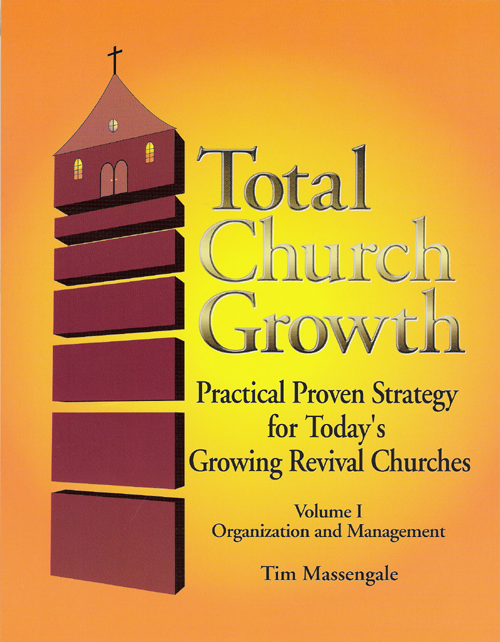
By Tim Massengale
Annual Statistical Church Evaluation
If your church is incorporated within your great state – as it well should be – then you are required by law to hold an annual business meeting. At this business meeting you must maintain a roster roll of members. These are those individuals that are official members of your church and have met your membership qualifications. They are eligible to vote on matters of the church. There are three very important reasons why this is critical.
Protect against Lawsuit
First, your church should be incorporated to protect your church members from liability in case of lawsuit. If you end up with a slip-and-fall suit or one of your youth workers molests a child, chances are you will be sued, if not by the individual, then by their insurance company.
If you are incorporated this makes your church a separate entity in the eyes of the law. But if you are not incorporated – then the bank accounts and personal assets of your members become liable for redress. If you are incorporated, they can go no farther than the accounts and assets of the church. Your personal assets and your member’s assets are protected. But for this to work you have to hold that annual business meeting and keep your membership roll up to date.
Determining Who Can Vote
The second reason is the one I want to emphasize here today. Your roster roll determines who can vote. Recently one of our good pastors was accused of immorality. He stated emphatically that it was not true and frankly I believe him. But it caused considerable dissention in the church. The church bylaws stated that if such a situation arose, and there was no clear evidence to prove his innocence, that there should be held a vote of confidence. If the pastor had lost the confidence of a majority of the members, then he would be removed.
So brethren, don’t neglect your annual business meeting; and keep your membership roll current. This list of members, based upon what your bylaws state are the requirements for membership, should be updated each year. Third reason for keeping your membership roll up to date – it’s an excellent growth evaluation tool.
You should be able to go over the list each year and for each name you remove, note down why: Death, moved away, or backslid. If they had backslidden, ask yourself ‘why.’ Was there something more you could have done? Is there some way to prevent this from happening again? You cannot stop everyone from leaving. But a good pastor is not afraid to ask himself the hard questions and to make changes if needed. You should also look at every name you add to your membership list. Membership increase comes three ways: Births, move-in’s and new converts. Look at each convert and ask yourself what methods were utilized to reach them. What programs, ministries, and events are bringing in the most results?
You should strengthen those that are working and consider replacing or fixing those that are not. Evangelism should not have sacred cows. You can’t waste time and money on ministries that are failing to reach the lost.
Determine the Net Membership
Finally, you should be able to determine your net membership growth for the year. If you are not growing, ask yourself why, and develop a plan to correct it so you can once again reach the lost. Now, I’ll be the first to admit that numbers alone do not tell the whole story of a church’s growth.
Spiritual growth is every bit as important as physical growth and it is often difficult to quantify. However, numbers can help you see your progress and assist you in targeting areas of need. So I would encourage you to do an annual evaluation of your growth statistics. If done each year, it can become a valuable tool for planning and goal setting. The annual update of your membership roll is an important tool that will assist you in this process.
Statistics:
Here are a few of the statistics to consider in helping you plan your growth program
Loss Rate – This is the normal loss that every church experiences. You can lose members three ways: death, transfers out, and backsliding. Knowing the percentage of loss in each area is insightful.
Growth Rate: Membership increases can also come three ways: births, transfers in, and conversions. Know your growth in each area.
Net Growth Rate: By subtracting your total losses from your total gains you will arrive at your actual numerical increase for the year.
New Convert Retention Rate: Look at the total list of names in your baptism and Holy Ghost records and ask, “are they still attending?” Dividing the number still attending into your total conversions will give you your new convert retention rate for the year. Retention is critical. You should be keeping 30-50% or more of your new converts as faithful members.
Evangelism Success: Again, look at the list of new members you added to your church. You should be able to determine what evangelism method or event resulted in their conversion. Know what’s working; then you can strengthen or replace what is not. Build on your strengths. You should also note how many home Bible studies were taught that year, how many CCC contacts were made, and what your average bus rider attendance was. Gather totals and averages for all your evangelism ministries to help you identify areas needing attention.
Average Attendance: In-house attendance on any single service tells you little. Average attendance each quarter for each of your weekly services tells you a lot. Your average Sunday morning attendance this quarter, compared to your average Sunday morning attendance last year for that same quarter, can indicate your growth trend on Sunday morning. As your membership numbers grow, your attendance should grow as well. Work to increase your attendance to each service.
Total Visitors: 100% of your new converts come from your visitors. If you can increase your door traffic, you will increase your converts. Another important number is how many visitors received an at-home visit that year. Visitors should be visited 3-4 times each year. Don’t neglect this.
Percentage Involvement: Growing churches tend to have a high percentage of active member involvement. Go over your membership roster and list how each member is involved, both in evangelism and in-church type ministries. Encourage everyone to be involved somewhere, especially in outreach. After studying the slide, Mark pulled out his notebook and began writing, grinning broadly as he did so. The knowledge and wisdom of this elderly pastor never ceased to amaze him.




2 thoughts on “Annual Statistical Church Evaluation (Entire Article)”
Comments are closed.